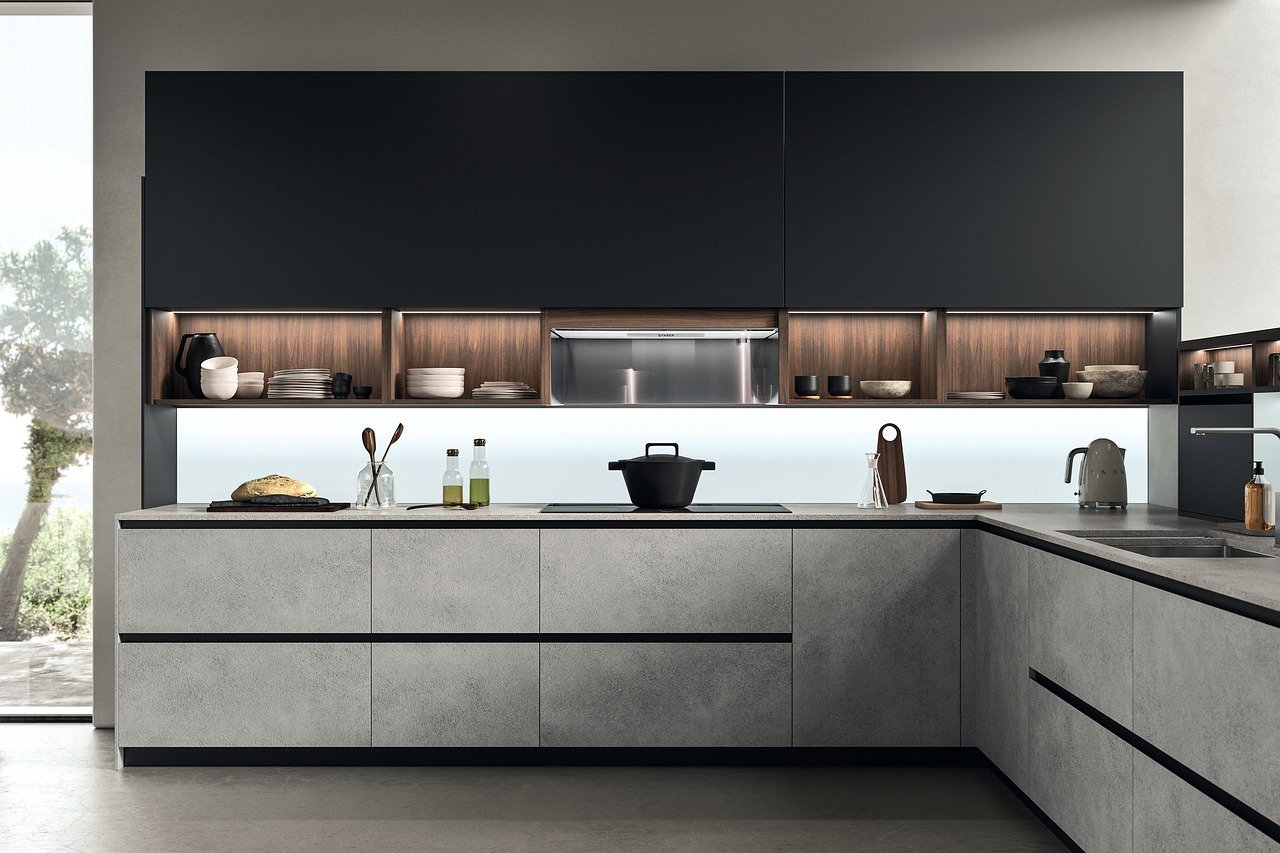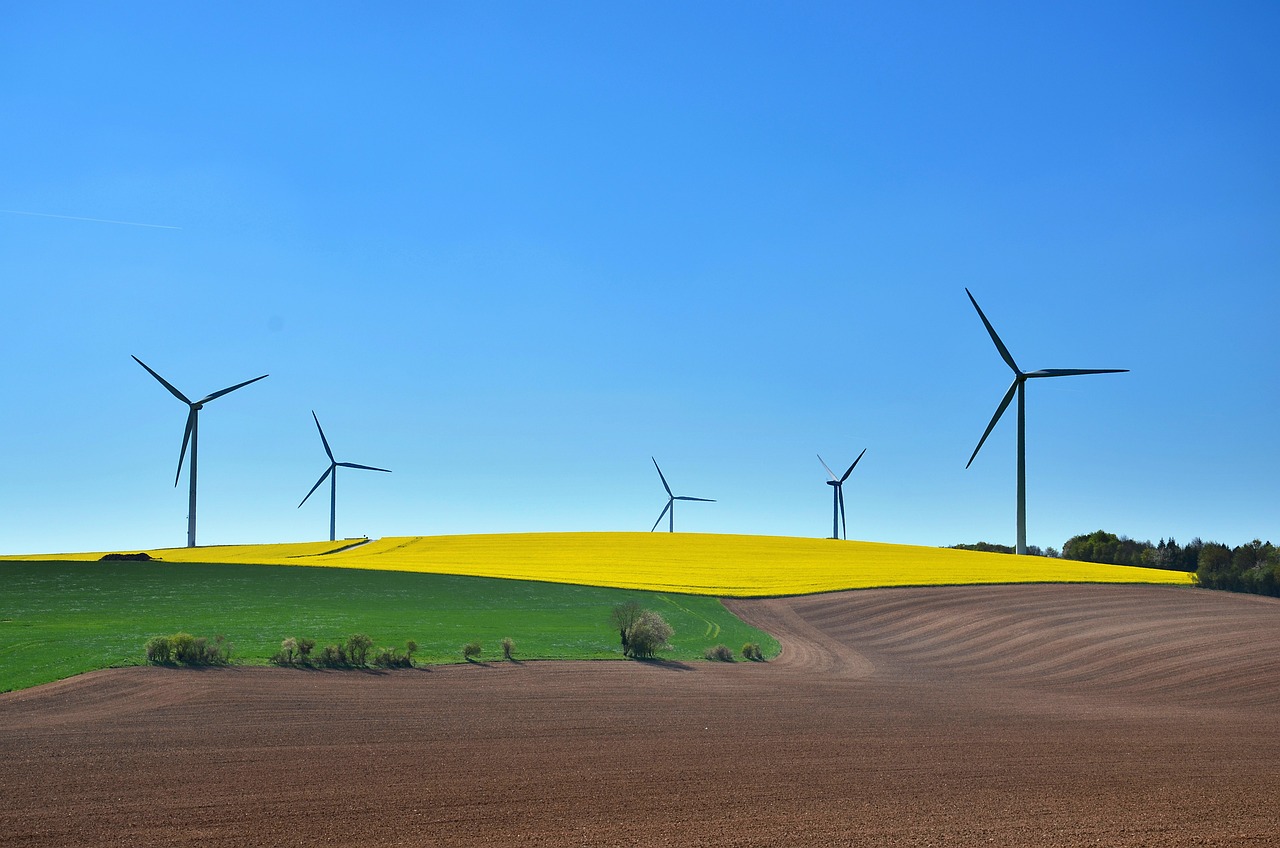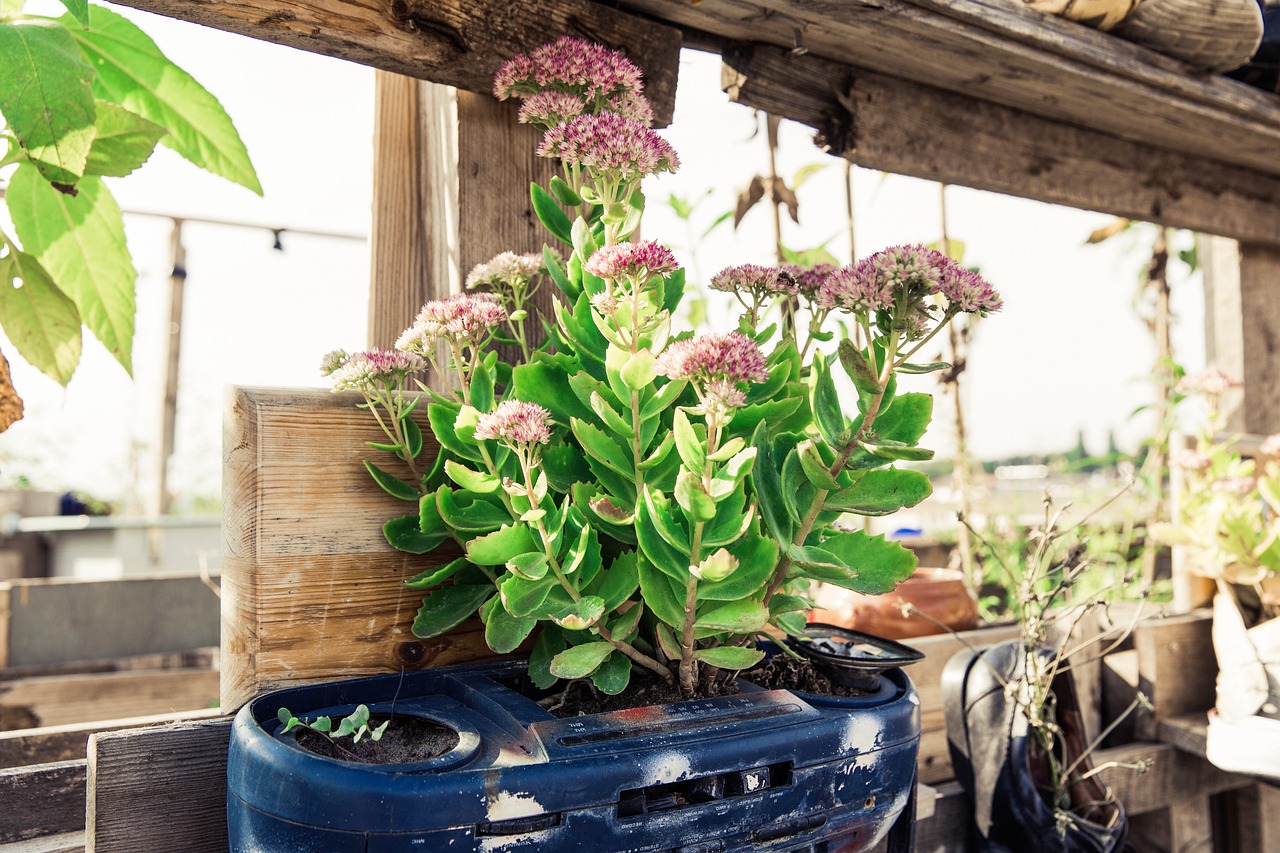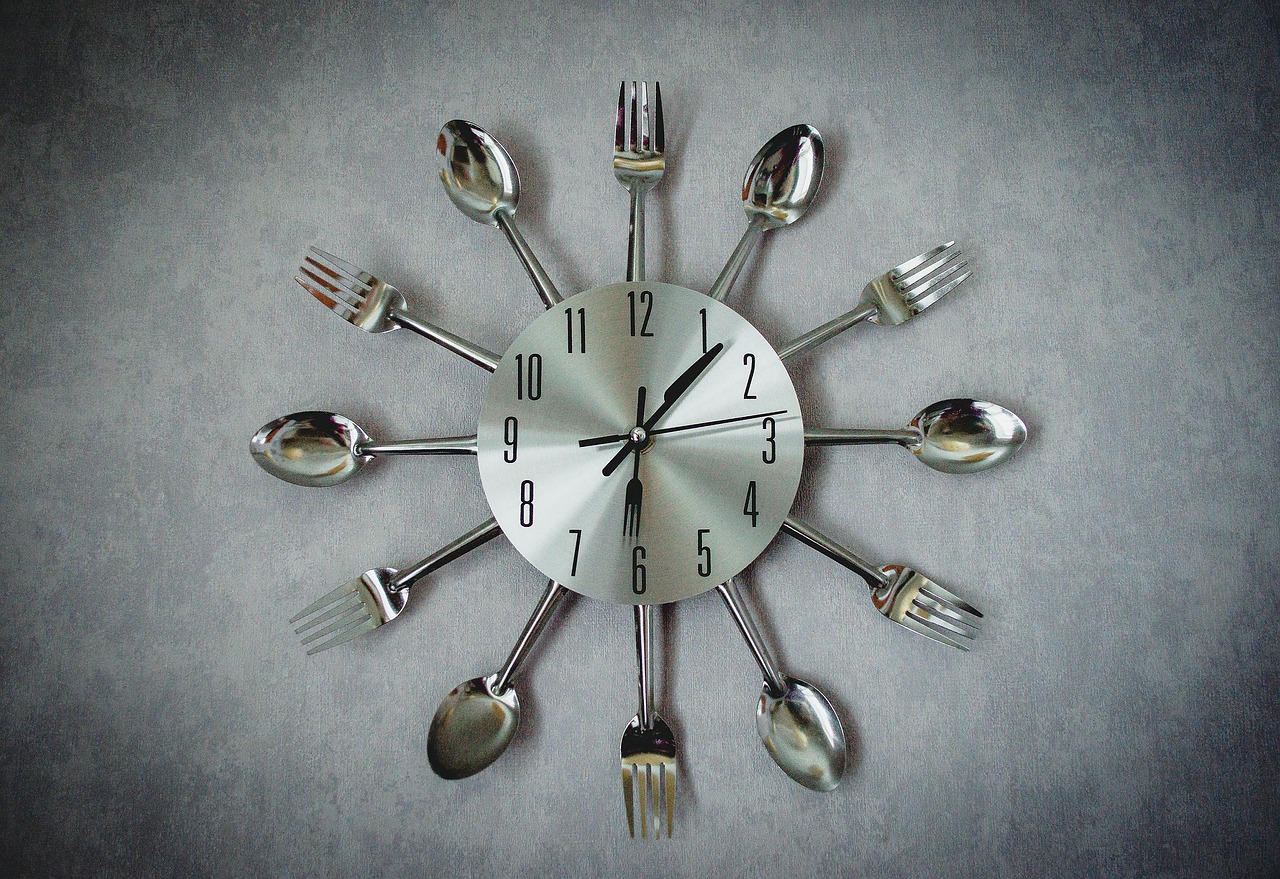How to Create a Sustainable Kitchen?
Transforming your kitchen into a sustainable space is not just a trend; it's a lifestyle choice that can have a profound impact on our planet. Imagine walking into a kitchen where every element—from the countertops to the appliances—reflects a commitment to the environment. Sounds appealing, right? By making conscious decisions about materials, energy consumption, and water usage, you can create a kitchen that not only serves your culinary needs but also contributes to a healthier planet.
So, how do you start this journey? It begins with a few simple yet effective changes. First, consider the materials you use in your kitchen. Opting for sustainable materials can drastically reduce your kitchen's environmental footprint. Think bamboo for your cabinets or recycled glass for your countertops. These choices not only look stunning but also tell a story of sustainability.
Next, let’s talk about appliances. Investing in energy-efficient appliances is a game-changer. Not only do they lower your energy bills, but they also help in reducing greenhouse gas emissions. Imagine having a refrigerator that not only keeps your food fresh but does so while consuming less energy. It’s like having your cake and eating it too!
Now, let’s not forget about water. Implementing water conservation techniques in your kitchen is crucial. Simple changes like installing low-flow faucets or using your dishwasher wisely can save gallons of water. It’s astonishing how small adjustments can lead to significant savings—both for the environment and your wallet.
Creating a sustainable kitchen is about making informed choices that benefit both you and the planet. It’s about embracing a lifestyle that prioritizes eco-friendliness without sacrificing style or functionality. So, are you ready to take the plunge and transform your kitchen into a beacon of sustainability?
- What are some sustainable materials for kitchen countertops?
Some great sustainable materials include recycled glass, bamboo, and reclaimed wood. These materials not only look beautiful but are also eco-friendly.
- How can I make my kitchen more energy-efficient?
Investing in energy-efficient appliances, using LED lighting, and incorporating smart technology can significantly enhance your kitchen's energy efficiency.
- What are low-flow faucets, and how do they help?
Low-flow faucets reduce the amount of water used without sacrificing pressure, helping you conserve water while still effectively washing dishes or preparing food.

Choosing Sustainable Materials
When it comes to creating a sustainable kitchen, one of the most impactful decisions you'll make is choosing the right materials. The materials you select for your countertops, cabinets, and flooring can either contribute to environmental harm or promote sustainability. So, how do you make the best choices? Let's dive in!
First off, consider recycled materials. Using materials that have been repurposed reduces waste and minimizes the demand for new resources. For instance, recycled glass countertops not only look stunning but also help divert glass from landfills. Similarly, reclaimed wood for cabinets or flooring adds character to your kitchen while being eco-friendly.
Another fantastic option is bamboo. This fast-growing plant is incredibly sustainable and can be used for everything from flooring to cabinetry. Bamboo is not only durable but also has a natural beauty that can bring warmth to your kitchen space. Plus, it grows back quickly, making it a renewable resource that you can feel good about using.
When selecting countertops, consider materials like quartz or solid surface materials. These options are often made from natural materials and can be more sustainable than traditional granite or marble, which requires extensive quarrying. Additionally, quartz surfaces are non-porous, making them easier to clean and maintain, which can save water in the long run.
For flooring, you might want to explore options like linoleum or cork. Both are made from natural materials and are biodegradable, which means they won’t contribute to landfill waste when it's time for an upgrade. Cork, in particular, is harvested from the bark of cork oak trees, allowing the tree to continue growing and absorbing carbon dioxide.
Lastly, it’s essential to consider the finishes and adhesives used in your kitchen materials. Opt for low-VOC (volatile organic compound) finishes and adhesives to ensure better indoor air quality. High levels of VOCs can be harmful to your health and the environment, so choosing low-emission options is a simple yet effective way to enhance the sustainability of your kitchen.
In summary, the materials you select for your kitchen can have a significant impact on the environment. By choosing recycled materials, bamboo, quartz, linoleum, and low-VOC finishes, you can create a beautiful and sustainable kitchen that not only looks good but also does good for the planet. Remember, every little choice counts when it comes to sustainability!
- What are the most sustainable materials for kitchen countertops? Recycled glass, quartz, and solid surface materials are excellent choices for eco-friendly countertops.
- Is bamboo a good choice for kitchen cabinets? Yes! Bamboo is a fast-growing, renewable resource that is both durable and stylish.
- How can I ensure my kitchen finishes are eco-friendly? Look for low-VOC finishes and adhesives to improve indoor air quality and reduce environmental impact.
- What flooring options are best for sustainability? Linoleum and cork are both natural, biodegradable options that are great for sustainable kitchens.

Energy-Efficient Appliances
When it comes to creating a sustainable kitchen, one of the most impactful changes you can make is investing in . These modern marvels not only help you save on energy bills but also play a crucial role in reducing your overall carbon footprint. Imagine transforming your kitchen into a space that not only looks great but also contributes to a healthier planet—sounds appealing, right?
So, what exactly makes an appliance energy-efficient? Generally, these appliances are designed to use less energy while maintaining the same level of performance as their traditional counterparts. For instance, ENERGY STAR-rated products are a great place to start. They are rigorously tested and certified to meet specific energy efficiency guidelines set by the U.S. Environmental Protection Agency. By opting for these appliances, you can enjoy the benefits of cutting-edge technology while being kind to the environment.
Let’s break down some of the key appliances that can make a significant difference in your kitchen:
- Refrigerators: Modern models come equipped with features like LED lighting, improved insulation, and variable speed compressors, all of which contribute to lower energy consumption.
- Dishwashers: Look for models that use less water and energy per cycle. Many newer dishwashers have sensors that adjust the water usage based on the load size, making them incredibly efficient.
- Ovens and Ranges: Induction cooktops, for instance, heat up faster and are more energy-efficient than traditional electric or gas stoves.
Now, let’s dive deeper into two essential appliances that hold the key to energy efficiency in your kitchen: refrigerators and dishwashers.
Your refrigerator is likely one of the largest energy consumers in your home, so choosing the right model is vital. When selecting a refrigerator, look for features such as:
- Size and Configuration: A larger fridge may seem appealing, but it can lead to higher energy use. Choose a size that fits your household needs.
- Energy Ratings: Always check for the ENERGY STAR label, which indicates superior energy efficiency.
- Temperature Control: Models with advanced temperature control settings can help maintain optimal cooling without wasting energy.
Additionally, consider smart technology integration in your refrigerator. Smart fridges can monitor energy usage and even track your food inventory. This means you can manage your grocery shopping better, reducing food waste and saving money in the long run.
Imagine a fridge that not only keeps your food fresh but also sends you notifications about items nearing their expiration dates. Smart refrigerators can connect to your home Wi-Fi, allowing you to monitor their energy consumption through an app on your smartphone. This integration can lead to more informed decisions about what you buy and consume, ultimately reducing waste.
When it comes to refrigerators and freezers, size matters—literally. A larger appliance consumes more energy, so it’s essential to select one that meets your needs without excess capacity. Think of it like this: a small car is more fuel-efficient than a large SUV. The same principle applies here. By choosing the right size, you can significantly enhance your kitchen's energy efficiency.
In addition to appliances, the way you cook can also impact your kitchen's energy efficiency. For example, using a microwave instead of an oven can save a significant amount of energy. You might not realize it, but small changes in cooking methods can lead to substantial savings over time. It’s all about being mindful of how you use energy in your kitchen.
In conclusion, investing in energy-efficient appliances is a smart choice for anyone looking to create a sustainable kitchen. Not only do these appliances help you save money, but they also contribute to a healthier environment for future generations. So, why not take the plunge and make your kitchen a beacon of sustainability?
Q1: What are the benefits of using energy-efficient appliances?
A1: Energy-efficient appliances help reduce energy bills, lower your carbon footprint, and often come with advanced features that enhance usability.
Q2: How can I tell if an appliance is energy-efficient?
A2: Look for the ENERGY STAR label, which indicates that the appliance meets strict energy efficiency guidelines.
Q3: Are energy-efficient appliances more expensive?
A3: While they may have a higher upfront cost, energy-efficient appliances often save you money in the long run through reduced energy bills.
Q4: Can I retrofit my existing appliances to be more energy-efficient?
A4: Some appliances can be retrofitted with energy-saving components, but in many cases, replacing them with energy-efficient models is more effective.

Refrigerators and Freezers
When it comes to creating a sustainable kitchen, one of the most significant investments you'll make is in your . These appliances are essential for preserving food, yet they can also be major energy consumers. So, how can you choose the right model that balances functionality with energy efficiency? First off, look for appliances that have the ENERGY STAR label, which indicates they meet strict energy efficiency guidelines set by the U.S. Environmental Protection Agency. By opting for these models, you can cut down on energy consumption by up to 50% compared to standard models.
Another crucial factor to consider is the size and capacity of your refrigerator or freezer. Many people tend to buy larger models than necessary, which can lead to wasted energy. It's important to select a size that fits your household's needs. For instance, if you often find yourself throwing out food because it goes bad before you can consume it, a smaller fridge might be a better option. On the other hand, if you have a large family or frequently entertain guests, a larger capacity might be necessary. The key is to find a balance that avoids both overcrowding and underutilization.
Modern refrigerators and freezers come equipped with a variety of energy-saving features that can enhance their efficiency. For example, many models now include LED lighting, which uses significantly less energy than traditional incandescent bulbs. Additionally, consider models with variable speed compressors that adjust their cooling power based on the internal temperature, helping to save energy without sacrificing performance.
Moreover, integrating smart technology into your kitchen can elevate your sustainability game even further. Smart refrigerators can monitor energy usage and even track the inventory of your food. Imagine receiving a notification on your phone when you're running low on essentials or when food is approaching its expiration date! This not only helps minimize food waste but also allows you to manage your grocery shopping more effectively.
In conclusion, selecting the right refrigerator or freezer involves evaluating energy efficiency, size, and smart features. By making informed choices, you can significantly reduce your kitchen's energy consumption while keeping your food fresh and delicious. Remember, every small step counts when it comes to creating a sustainable kitchen!
- What is the best energy-efficient refrigerator brand? Many brands, including Whirlpool, LG, and Samsung, offer energy-efficient models. Always look for the ENERGY STAR label.
- How can I maintain my refrigerator's efficiency? Regularly clean the coils, keep the door seals airtight, and avoid overloading the fridge to maintain optimal efficiency.
- Are smart refrigerators worth the investment? While they may come with a higher upfront cost, smart refrigerators can save you money in the long run through energy savings and reduced food waste.

Smart Technology Integration
In today's fast-paced world, smart technology has become an integral part of our daily lives, and the kitchen is no exception. Imagine having a refrigerator that not only keeps your food fresh but also helps you track what you have inside. Smart refrigerators come equipped with features that allow you to monitor energy usage, keep tabs on your food inventory, and even suggest recipes based on the ingredients you have at hand. This integration of technology not only makes cooking easier but also promotes sustainability by reducing food waste.
Moreover, smart kitchen appliances can communicate with each other, creating a seamless cooking experience. For instance, your oven can preheat automatically when your smart microwave sends a signal that your dish is ready to be cooked. This level of automation not only saves time but also optimizes energy consumption. By using smart devices, you can ensure that your appliances are running efficiently, which is crucial for a sustainable kitchen.
Another exciting aspect of smart technology in the kitchen is the ability to control your appliances remotely. Have you ever left home and wondered if you turned off the oven? With smart technology, you can check and control your appliances from your smartphone. This feature not only provides peace of mind but also helps in reducing energy waste by allowing you to turn off devices that might have been left on unintentionally.
To help you understand the benefits of integrating smart technology into your kitchen, here’s a quick comparison table of traditional vs. smart appliances:
| Feature | Traditional Appliances | Smart Appliances |
|---|---|---|
| Energy Monitoring | No | Yes |
| Remote Control | No | Yes |
| Recipe Suggestions | No | Yes |
| Inventory Management | No | Yes |
By embracing smart technology, you not only enhance your cooking experience but also contribute to a healthier planet. As you make the transition to a more sustainable kitchen, consider investing in appliances that offer these smart features. Not only will you enjoy the convenience, but you’ll also be doing your part to reduce your carbon footprint.
In conclusion, integrating smart technology into your kitchen is a game-changer. It’s like having a personal assistant who helps you cook more efficiently while keeping sustainability in mind. So, why not take the plunge? The future of cooking is here, and it’s smarter than ever!

Size and Capacity Considerations
When it comes to creating a sustainable kitchen, one of the most critical factors to consider is the size and capacity of your appliances, especially your refrigerator and freezer. Choosing the right size is not just about fitting into your kitchen space; it’s about maximizing efficiency and minimizing waste. Imagine this: a refrigerator that’s too large for your needs can lead to excess energy consumption, while one that’s too small may force you to buy more groceries than necessary, leading to spoilage and food waste. It’s a delicate balance!
To make the best choice, start by evaluating your household's lifestyle. Are you a family of five that loves to cook in bulk, or are you a solo dweller who prefers dining out? Understanding your cooking habits and grocery shopping frequency can help you determine the ideal size. Generally, a refrigerator should be around 4 to 6 cubic feet per person in your household. For example, a family of four might benefit from a fridge with a capacity of at least 20 cubic feet.
Here’s a quick breakdown of common refrigerator sizes based on household needs:
| Household Size | Recommended Refrigerator Size (Cubic Feet) |
|---|---|
| 1-2 People | 10-15 |
| 3-4 People | 15-20 |
| 5+ People | 20+ |
Another essential aspect to consider is the energy efficiency of the appliance you choose. Larger models often consume more energy, so it’s crucial to look for those with the Energy Star label, which indicates they meet strict energy efficiency guidelines set by the Environmental Protection Agency. This not only helps in reducing your carbon footprint but also saves you money on your energy bills.
Furthermore, think about how you organize your food within the refrigerator. If you have a well-organized fridge, you can avoid buying duplicates of items you already have, reducing both waste and energy consumption. Consider using clear containers to store leftovers and labeling them with dates to keep track of what needs to be consumed first. This simple practice can significantly enhance your kitchen's sustainability!
Lastly, don't overlook the importance of proper placement in your kitchen. Ensure that your refrigerator is located away from heat sources, like the oven or direct sunlight, as this can force it to work harder, leading to increased energy usage. By strategically positioning your appliances, you can further improve their efficiency.
In conclusion, selecting the right size and capacity for your refrigerator and freezer is crucial for creating a sustainable kitchen. It requires a thoughtful approach to understanding your household needs, choosing energy-efficient models, and organizing your food effectively. By doing so, you not only contribute to a healthier planet but also enjoy a more functional and cost-effective kitchen!
- What is the ideal refrigerator size for a family of four? A refrigerator with a capacity of at least 20 cubic feet is recommended for a family of four.
- How can I improve the energy efficiency of my refrigerator? Ensure it is well-organized, placed away from heat sources, and consider models with the Energy Star label.
- What are some tips for reducing food waste in my kitchen? Organize your fridge, label leftovers with dates, and plan meals around what you already have.

Cooking Methods
When it comes to creating a sustainable kitchen, the way you cook can significantly impact not only your energy consumption but also the environment. Adopting energy-efficient cooking methods can make a big difference in reducing your carbon footprint. Have you ever thought about how much energy your cooking habits consume? It might surprise you to learn that simple changes in your cooking techniques can lead to substantial energy savings!
One of the easiest ways to improve energy efficiency in your kitchen is by using the right cookware. For instance, using flat-bottomed pots and pans allows for better contact with the heat source, which means quicker cooking times and less energy wasted. Additionally, investing in high-quality materials like stainless steel or cast iron can enhance heat retention, allowing you to cook at lower temperatures. You might be amazed at how much energy you can save just by switching up your pots and pans!
Another effective strategy is to make use of your microwave or slow cooker whenever possible. These appliances use significantly less energy than traditional ovens. For example, microwaves can cook food in a fraction of the time it takes an oven, while slow cookers allow you to prepare meals with minimal energy usage over several hours. It's like having a superhero in your kitchen that helps you save both time and energy!
Moreover, consider batch cooking. Preparing meals in larger quantities not only saves time during the week but also reduces the number of times you need to turn on your stove or oven. This method is not only efficient but also promotes less food waste, as you can make use of ingredients that might otherwise spoil. Imagine cooking a big pot of chili on a Sunday and having delicious meals ready for the entire week!
Lastly, don't underestimate the power of steam cooking. Steaming retains more nutrients in your food compared to boiling, and it uses less energy. Plus, it’s a fantastic way to prepare vegetables, keeping them crisp and vibrant. Pair steaming with a pressure cooker, and you’ll be amazed at how quickly you can whip up a healthy meal!
In summary, by adjusting your cooking methods, you can create not just a sustainable kitchen but also a healthier lifestyle. Remember, every small change counts! Whether it's switching to more efficient appliances, using the right cookware, or adopting new cooking techniques, you can contribute to a greener planet while enjoying delicious meals.
- What are the benefits of using energy-efficient cooking methods?
Energy-efficient cooking methods help reduce energy consumption, lower utility bills, and minimize your carbon footprint, contributing to a healthier planet.
- Can I still cook traditional meals using sustainable methods?
Absolutely! You can adapt traditional recipes to utilize energy-efficient techniques, such as using a slow cooker or steaming instead of boiling.
- How can I ensure I'm using my appliances efficiently?
Read the manuals for your appliances, clean them regularly, and use them according to their specifications to maximize efficiency.

Water Conservation Techniques
In today's world, where every drop counts, water conservation in your kitchen is not just a trend; it’s a necessity. You might be surprised to learn that the kitchen is one of the biggest culprits when it comes to water usage in the home. From washing dishes to preparing meals, the opportunities for waste are abundant. But fear not! There are several practical techniques you can implement to ensure that your kitchen is not only functional but also eco-friendly.
First off, let’s talk about the dishwashing process. It’s easy to fall into the trap of running the water continuously while scrubbing away at those stubborn pots and pans. Instead, consider filling one side of your sink with soapy water and the other side with rinse water. This method not only saves water but also makes the process more efficient. According to studies, using a dishwasher can actually use less water than washing by hand, provided it’s fully loaded. So, if you’re washing just a few items, it might be worth waiting until you have a full load.
Another key area for conservation is your faucets and sinks. Upgrading to low-flow faucets can significantly reduce your water consumption without sacrificing performance. These fixtures are designed to maintain strong water pressure while using less water. For instance, a low-flow faucet can use as little as 1.5 gallons per minute, compared to the standard 2.2 gallons. This simple change can lead to substantial savings over time, both in your water bill and in the amount of water you use.
Moreover, consider installing a dual-flush toilet in your kitchen if you have a restroom nearby. This technology allows you to choose between a full flush and a half flush, depending on your needs. You might think, “Why would I need a toilet in the kitchen?” Well, if you have guests over, it can be quite convenient and it saves water in the long run!
Let’s not forget about rainwater harvesting. If you have the space, setting up a rain barrel can be a fantastic way to collect water for various uses, such as rinsing vegetables or watering plants. This not only conserves water but also reduces runoff, helping to keep your local environment clean.
To summarize, implementing water conservation techniques in your kitchen involves a combination of smart choices and modern technology. Here’s a quick recap:
- Use the sink efficiently when washing dishes.
- Upgrade to low-flow faucets and fixtures.
- Consider a dual-flush toilet for additional savings.
- Explore rainwater harvesting options.
By making these adjustments, you’ll not only help the environment but also enjoy lower utility bills. It’s a win-win situation! Remember, every small change contributes to a larger impact. So, what are you waiting for? Start transforming your kitchen into a sustainable space today!
Q: How much water can I save by using a low-flow faucet?
A: On average, low-flow faucets can save you about 30% more water compared to standard faucets, which adds up significantly over time.
Q: Is it really more efficient to use a dishwasher rather than washing dishes by hand?
A: Yes! Modern dishwashers use less water than hand washing, especially when they are fully loaded.
Q: What are some other ways to conserve water in the kitchen?
A: Besides upgrading fixtures, consider using a basin for rinsing produce, fixing leaks promptly, and only running the dishwasher with a full load.

Efficient Dishwashing
When it comes to maintaining a sustainable kitchen, efficient dishwashing is an often-overlooked aspect that can make a significant impact on both water and energy consumption. Did you know that washing dishes by hand can actually use more water than running a modern dishwasher? That's right! If you're still scrubbing away at the sink, it might be time to reconsider your approach. Let's dive into some practical tips and tricks that can help you optimize your dishwashing routine, making it not just efficient but also eco-friendly.
First off, if you're using a dishwasher, always try to run it with a full load. This simple habit can save a considerable amount of water and energy. According to the Environmental Protection Agency (EPA), a full dishwasher uses less water than washing the same number of dishes by hand, and it usually does a better job at cleaning as well. So, before you hit that start button, take a moment to ensure your dishwasher is packed to the brim!
For those who prefer washing dishes by hand, there are still ways to be water-wise. Start by filling one basin with soapy water and another with rinse water. This method not only conserves water but also keeps the soap suds from going down the drain unnecessarily. You might be surprised at how much water this can save! And here’s a fun tip: consider using a spray nozzle on your sink faucet. This allows you to control the flow of water more effectively, minimizing waste while rinsing your dishes.
Another key factor in efficient dishwashing is the type of detergent you use. Opt for biodegradable and environmentally friendly dish soaps that are tough on grease but gentle on the planet. Many brands now offer concentrated formulas that require less product per wash, which means less packaging waste and a smaller environmental footprint. It's a win-win!
To further enhance your dishwashing efficiency, consider investing in a high-efficiency dishwasher. These modern machines are designed to use less water and energy, featuring advanced technologies like soil sensors that adjust the wash cycle based on how dirty the dishes are. When shopping for a new dishwasher, look for the Energy Star label, which indicates that the appliance meets energy efficiency guidelines set by the EPA.
In summary, whether you choose to hand wash or use a dishwasher, being mindful of your practices can lead to significant savings in both water and energy. By making small changes—like running full loads, using the right detergents, and upgrading to efficient appliances—you can contribute to a more sustainable kitchen. Remember, every drop counts!
- How much water does a dishwasher use compared to hand washing?
A modern dishwasher uses about 3 to 5 gallons of water per load, while hand washing can use up to 20 gallons or more, especially if the water runs continuously. - Is it better to wash dishes in hot or cold water?
While hot water can help dissolve grease and sanitize, using warm water with a good detergent can be just as effective and more energy-efficient. - Can I use homemade dish soap for washing dishes?
Yes! Many people make their own dish soap using natural ingredients like vinegar and baking soda, which can be effective and eco-friendly.

Faucet and Sink Upgrades
Upgrading your kitchen's faucets and sinks is a fantastic way to take a big leap towards sustainability. Not only do modern fixtures look sleek and stylish, but they also come with innovative technologies designed to conserve water. Imagine reducing your water usage without sacrificing performance—sounds like a win-win, right? In fact, by switching to low-flow faucets, you can cut your water consumption by up to 30% or more! This means more money saved on your water bill and less strain on our precious water resources.
When considering an upgrade, think about the materials used in the faucet and sink. Opt for products made from recycled or eco-friendly materials. Stainless steel is a great option, as it’s durable and can be recycled at the end of its life. Additionally, look for faucets that have the WaterSense label, which indicates that they meet the U.S. Environmental Protection Agency's efficiency criteria. These faucets are designed to use less water while still providing excellent performance.
Another aspect to consider is the installation of a pull-down or pull-out faucet. These types of faucets not only enhance functionality but also minimize water waste. You can easily switch between a steady stream and a spray, allowing you to use just the right amount of water for your tasks. Plus, they make rinsing dishes and cleaning your sink a breeze!
Don't forget about the sink itself! A deep, spacious sink can help reduce water usage by allowing you to soak and wash larger pots and pans more efficiently. You might also want to consider a sink with a built-in composting system. This makes it easier to separate food waste right at the source, encouraging composting and reducing landfill waste.
To help you make informed decisions, here’s a quick comparison of some popular faucet types and their benefits:
| Faucet Type | Water Efficiency | Features |
|---|---|---|
| Low-Flow Faucet | 30% less water | Standard flow, stylish design |
| Pull-Down Faucet | Variable flow | Convenient spray options |
| Touchless Faucet | Up to 50% less water | Motion-activated for hands-free use |
By investing in these upgrades, not only are you enhancing the aesthetic appeal of your kitchen, but you're also making a conscious effort towards environmental sustainability. So, why not take that step today? Your kitchen—and the planet—will thank you!
- What is a low-flow faucet?
A low-flow faucet is designed to use less water than traditional faucets, helping to conserve water without sacrificing performance. - How much water can I save with a low-flow faucet?
You can save up to 30% or more on your water usage compared to standard faucets. - Are touchless faucets worth it?
Yes! Touchless faucets provide convenience and can help reduce water waste by allowing you to turn the water on and off with a simple wave of your hand. - Can I install a new faucet myself?
Many homeowners can install a new faucet with some basic tools and a little patience. However, if you're unsure, it's always best to hire a professional.
Frequently Asked Questions
- What are some sustainable materials I can use in my kitchen?
When it comes to sustainable materials, you have plenty of eco-friendly options! Consider using bamboo for cabinets, recycled glass for countertops, or cork flooring. These materials not only look great but also help reduce your kitchen's environmental impact.
- How do energy-efficient appliances help the environment?
Energy-efficient appliances are designed to consume less energy, which means lower utility bills and a smaller carbon footprint. By choosing appliances with the ENERGY STAR label, you're making a positive contribution to the planet while saving money in the long run!
- What features should I look for in a sustainable refrigerator?
When shopping for a sustainable refrigerator, look for models with energy-saving features like LED lighting, efficient insulation, and smart technology that monitors energy usage. These features can help you keep your food fresh while minimizing energy consumption.
- How can I cook more sustainably?
Adopting energy-efficient cooking methods can significantly reduce your kitchen's carbon footprint. Try using pressure cookers, slow cookers, or even microwaves to save energy. Also, consider cooking in batches to make the most out of your appliance usage!
- What are some water conservation techniques I can implement?
To conserve water in your kitchen, consider installing low-flow faucets and using a dishwasher instead of hand washing. You can also collect and reuse water from rinsing fruits and vegetables to water your plants. Every drop counts!
- How can I optimize my dishwashing routine for efficiency?
To maximize efficiency while dishwashing, always run your dishwasher with a full load and choose energy-saving settings. If you wash dishes by hand, fill the sink with water instead of letting the tap run. This can save gallons of water!
- Are there any specific brands known for sustainable kitchen appliances?
Yes! Brands like Bosch, Whirlpool, and LG are known for their commitment to sustainability. They offer a range of energy-efficient appliances that not only perform well but also help you reduce your environmental impact.



















